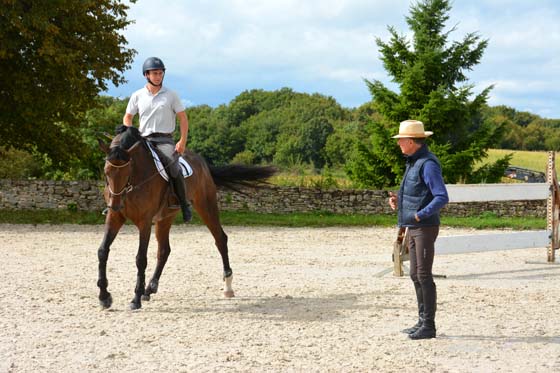You are here
Having the horse on the bit . Part 1

It is important for less experienced riders to know what having a horse “on the bit” means…
As we have seen, when faced with situations in which the horse feels
constrained, it will try to escape. The first time you tie up a horse using a halter and a rope, its initial reaction will be to pull back to try to escape. Likewise, a horse will try to spit out the bit you put in its mouth.
When it feels your hands at the end of the reins, it will try to free itself by shaking its head. All the rider’s work will consist in persuading the horse to accept these constraints, with kindness, with relaxed arms and fingers and a light contact.
The last stage will be having the horse “on the bit”, hence a trusting horse, which will have relaxed its cervical vertebrae, gently accepting ‘contact’ with the rider’s hands.
This can only happen with patience and understanding, initially often with low hands kept quite widely apart, so that the rider maintains elasticity in his arms.

It is true that at times I ride with my hands practically on my knees. This open attitude, although it may appear an exaggeration, allows one to have young horses on the bit more easily. I do not of course advise you to always ride like this. However, used for a few minutes, this position may allow one to unblock the situation, in particular with riders who have not yet understood the repercussions their position has on the horse’s attitude. It is pointless to try to have a horse on the bit if the rider cannot keep his hands still. To understand the influence your position has on the horse, do not hesitate to ask a very good rider to ride it. You will see to what extent your horse can be transformed. Starting from there, establish for yourself the aim of achieving the same results.
As far as having the horse on the bit is concerned, the final aim of the rider is to establish a contact, weighing only a few grams, with the horse’s mouth, whatever the position of his hands: high, low, separate or close together. This contact must be permanent in all situations: when turning, bending to the right, to the left, slowing down, stopping… the horse’s mouth trustingly follows the rider’s hands and vice-versa.








